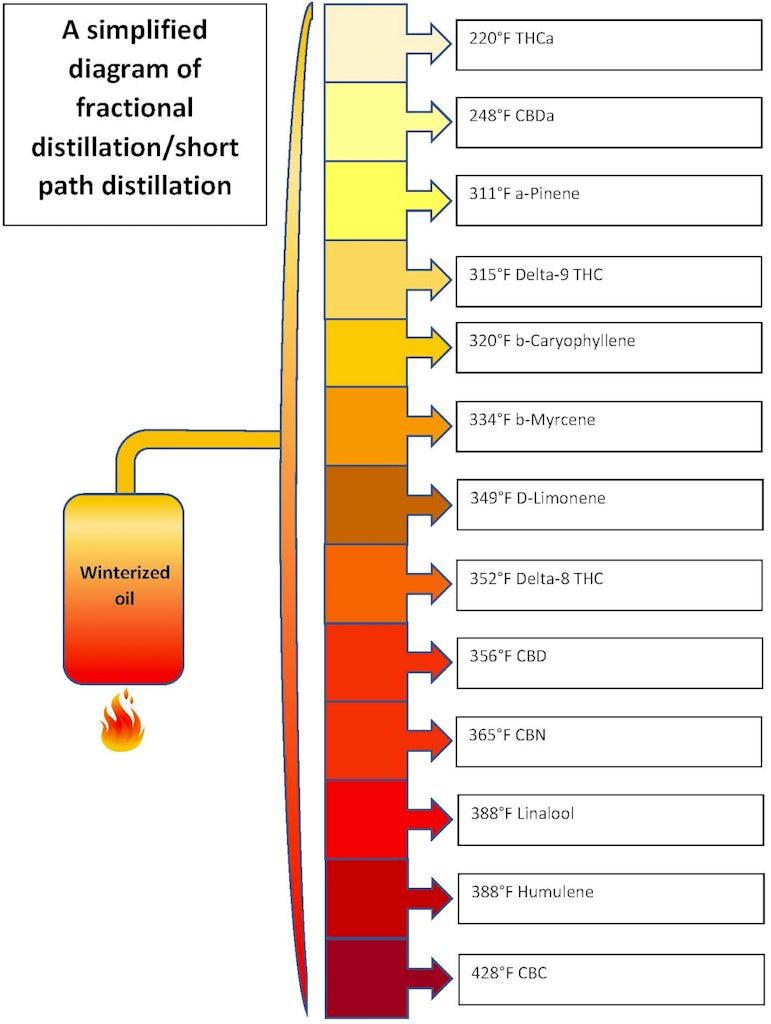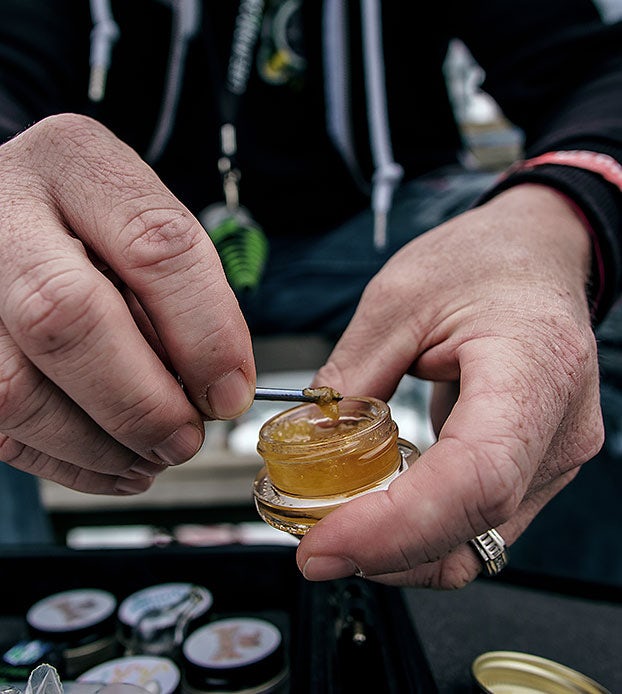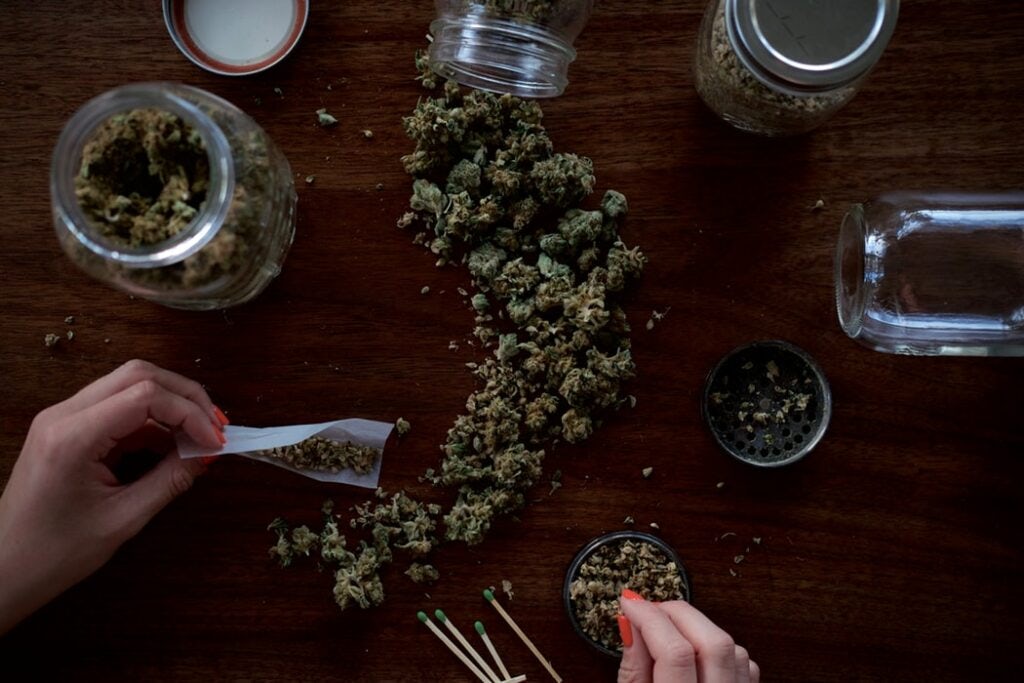With the ever-increasing diversity of the cannabis market has come a brand new glossary of terms. And with these many terms — which include “concentrates,” “extracts,” “distillates,” “isolates,” and more — has come some confusion.
One of the main sources for this confusion is the fact that the terms “concentrates” and “extracts” often get used interchangeably when in reality they can be quite different.
This article will provide you with some helpful info on what exactly cannabis extracts are, and what makes them so effective.
There’s one important overarching concept to keep in mind before beginning, though. The phrase cannabis concentrate is actually somewhat of an umbrella term that encompasses several others. Cannabis concentrates can be defined as: “A product derived from cannabis’ most resinous parts (i.e. its flowers) that is then processed into a more concentrated form.”
There are two main types of cannabis concentrates: extracts and solvent-free varieties. As you might expect, extracts are so named simply because they’re chemically extracted from the cannabis plant. But cannabis extracts have a rich history that’s been building on itself since ancient times, which makes things a little more nuanced.
What are cannabis extracts?
Cannabis extracts are one subtype of cannabis concentrates. More specifically, they’re any type of concentrate obtained from cannabis via means of chemical extraction. To carry out the extraction process a solvent of some sort is used, something to ‘pull’ out the plant’s active ingredients.
Why specialized cannabis extracts? While there’s nothing wrong with other types of products, cannabis extracts carry their own set of benefits. They’re pure, potent, and more bioavailable than many other delivery methods, especially if taken in tincture form. Cannabis extracts are also legal and safe, thanks to evolving production regulations.
There are three parts to traditional cannabis extracts — and to plant extracts in general:
Solute | The substance that gets dissolved. In our case, cannabis gets partially dissolved.
Solvent | The substance that does the dissolving. Usually, it’s a liquid.
Solution | The final substance. It’s a combination of solute + solvent.
Plant extracts have a rich history. Crude plant oils have been in use since at least 2,600 BCE when clay tablets from Mesopotamia depicted oils from Cypress and Myrrh being used therapeutically. These same plants are still utilized for coughs and colds today. The slightly more recent Ebers Papyrus (circa. 1500 BCE) and its collection of plant-based remedies also reveal that ancient cultures appreciated medicinal plants — and how to infuse these plant’s vital essences into herbal preparations. Interestingly enough, the Papyri also makes several mentions of cannabis.
What type of solvent did these classical cultures use to capture and extract a plant’s essence? It’s not totally clear, at least not at first glance. But with the adoption of distilled alcohol products in medieval times came the inception of a new type of extract-product: the tincture.
It was conceptualized by botanists and herbalists of the time that alcohol was able to extract the best out of any given plant. They were right. The Egyptian culture began soaking herbs in alcohol in order to make cordials and tincture; 1025 AD’s Canon of Medicine affirms this practice with numerous mentions of tinctures and “fluid extracts”.
Cannabis extracts explained
In an almost prophetic sense, ancient use of plant essences foreshadowed the much more refined production of cannabis-derived extracts that’s happening today. As our collective knowledge of the extraction process has grown, extracts themselves have also improved. They’re better (i.e, more bioavailable) and stronger (i.e, more concentrated) than ever.
Below are a few of the most common types of cannabis extracts:
Tinctures | Given their history, it shouldn’t be surprising that tinctures were among the first types of extracts seen in the modern era. Cannabis tinctures have been used in the Western world since the mid-1800s, when a colleague of cannabis pioneer WB O’Shaughnessy named Peter Squire introduced pharmaceutical-grade tinctures to western medicine [The Druggist, June 1890]. Tinctures were among the most popular delivery methods in the 19th-century United States, too.
Even so, these early cannabis tinctures were “known to be of exceedingly variable activity, owing to the crude drug being sometimes inert and sometimes active”. Thankfully things have improved since then.
While traditional tinctures used passive diffusion to extract the active compounds out of cannabis, today we have more direct methods. Modern cannabis tinctures often contain extracts made with versatile solvents via closed-loop extraction machine; in a sense, many modern-day extracts are missing the actual “solution” component of the trifecta listed above.
With this historical baseline established, let’s now cover some of the newer and more novel types of cannabis extracts out there.
Rick Simpson Oil | Also called RSO, Rick Simpson Oil is one of the best-known medical marijuana extracts around. RSO is a thick, resinous, cannabinoid-rich extract made famous by Canadian cannabis advocate Rick Simpson.
According to Simpson himself, true RSO is made using Naphtha as a solvent. Though it’s volatile and flammable, Naptha is easily purchased at many hardware stores. It does make an excellent solvent, though it may fail to extract (ie, capture) delicate terpenes. Lab analysis of this extract reveals ultra-high THC (80+%) content and relatively low terpene content. Rick Simpson oil may also contain residual naphtha, so ensure your product’s been tested for residual solvents, too.
RSO is unique in that it has the dual function of both topical and ingestable. The oil is especially popular with cancer patients, many of whom claim it can actually cure cancer and eliminate cancerous tumors. There’s no concrete proof of that — yet — though patient reports are decidedly promising. When Dr. Bob Melamede was asked for the names of those among the cured, he said, “how many hundreds do you want?”
Though traditionally made with high-THC Indica cultivars, high-CBD Rick Simpson oil can also be useful. This 2015 study found CBD-rich oils to be a potential treatment for patients with “treatment resistant” epilepsy.
BHO | BHO, or butane hash oil, is another super-strong type of cannabis extract. This one uses butane gas (a volatile hydrocarbon) to extract cannabinoids and terpenes from cannabis flower. Though BHO is indeed a great descriptive term, this type of extract is more commonly called “dabs”.
Butane extraction comes with impressive pros and cautionary cons. It’s very efficient (i.e, high-yielding) when it comes to getting all the good stuff out of cannabis and seems to create full-spectrum extracts that are rich in a variety of important terpenes. At the same time, butane extractions themselves require a high level of skill to do safely. Improper technique can result in gas leaks or even explosions.
The initial solution obtained from butane extraction isn’t safe to ingest, either. First, it must be thoroughly ‘purged’ of residual butane with a vacuum pump.
Once purged (and verified pure by lab testing), BHO is ready to use. Often it’s smoked using a dab rig that heats up small amounts of the extract. High-purity BHO is often called ‘shatter’ because of its stable, rigid texture.
Though difficult to accurately measure or dose, BHO has powerful effects and gives medicinal cannabis users fast relief from pain, anxiety, and neurological issues. BHO “dabs” are also used recreationally, where they still provide those who partake with powerful anxiolytic effects.
The largest potential downside to BHO? Accumulation of residual solvents (i.e, butane) in the user’s body. This accumulation has been correlated, at least in theory, with something called cannabis hyperemesis syndrome. CHS, as it’s more commonly referenced, is a cyclical condition of nausea and vomiting that afflicts some chronic cannabis users. Most experts agree that CHS probably isn’t caused by cannabis itself, but by the chemicals and solvents some cannabis products contain.
CO2 Extracts | C02 extracts utilize supercritical C02 to collect cannabis compounds. Within a highly-pressurized, closed-loop extraction machine, carbon dioxide dissolves cannabinoids and terpenes while alternating between its liquid and gaseous states.
The extract that results is purer than what you might see with butane, and the production process itself is much safer than BHO’s, too. For these reasons, C02 extraction is now among the industry’s most popular methods. The vast majority of CBD-infused vape cartridges (and many CBD oils) were made thanks to C02.
While safe and effective, C02 extraction isn’t perfect. Carbon dioxide isn’t an especially universal solvent, so its extraction inevitably ‘misses’ some terpenes. And, according to an insightful 2015 study, even the terpenes that do make it into C02-derived extracts could be skewed away from their native plant’s profile. Most CO2 extracts are broad-spectrum, not full spectrum, in nature—even if they claim otherwise.
But CO2-extracted vape oils are convenient, and their rapid onset time makes them a favorite of medical cannabis patients with anxiety. Vaporization also spares the lungs from exposure to smoke—and all the carcinogens that come with it.
Distillates | Distillates can be thought of as an evolved version of normal cannabis extracts. The distillation process removes terpenes and other trace compounds from less refined extracts. When those are removed, the cannabinoid content of distillate commonly rises to above 90%.
Often, fractional distillation is used to take advantage of the different evaporation points of cannabis compounds. This process allows chemists to separate different cannabinoids and terpenes by their molecular weight and craft more specialized extracts. Overall, distillation methods are only getting more advanced.

In other cases, terpenes are reincorporated into a solution during the distillation process. This technology has led to a rise in “strain-specific” vape oils that use specific terpenes to provide certain smells, tastes, and effects.
Distillates may be a favorite option of patients with ultra-high dosing demands. They’re also useful in the rare cases where medical cannabis patients exhibit sensitivity to cannabis terpenes like pinene.
Isolates | Purify distillate a few steps further, and you’ll get a cannabinoid isolate. This type of extract is exactly what its name implies: a single cannabinoid (usually THC or CBD), isolated from all others.
Once in isolate form, cannabinoid extracts lose their normal sludgy form and become crystalline. Good isolates can often be ~99.9% pure, with virtually no hue, smell, or taste.
A newer type of extract called “diamonds” is similar to products in the isolate category — but arguably even better. Diamonds are a sort of naturally-occurring isolate that forms when raw cannabis extracts fractionate themselves off. Depending on the plant material used, diamonds contain either CBDa or THCa crystals—and the presence of just enough trace compounds to give them a beautiful golden hue.
CBG and CBC isolates are another recent development. These trace cannabinoids have health benefits of their own, and manufacturers are just starting to offer them for therapeutic purposes. CBG, for example, could be especially good for gut health and glaucoma.
Capsules | Capsules don’t always fall within the category of cannabis extract — but they certainly do if made from any of the already-mentioned extracted materials.
For example, it’s fairly common for Rick Simpson Oil or cannabis distillate to be placed into a more convenient capsule form. This allows for more standardized dosing, a slower absorption rate, and the patient’s exposure to cannabinoid metabolites like 11-OH-THC and THC-COOH. The latter cannabinoid is stored in fat cells and may contribute to endocannabinoid system health long after THC is cleared out of the system.
Patients whose health condition requires precise cannabinoid intake each day may prefer to take their extract in capsule form. So may those with gut health problems, as capsules could provide an ideal timed-release of cannabinoids into the digestive tract.
Still, other patients may opt to take capsules in conjunction with other delivery methods simply for holism’s sake. Thankfully, the cannabis extract market is more diverse than ever before.
Sign up for bi-weekly updates, packed full of cannabis education, recipes, and tips. Your inbox will love it.

 Shop
Shop Support
Support
















